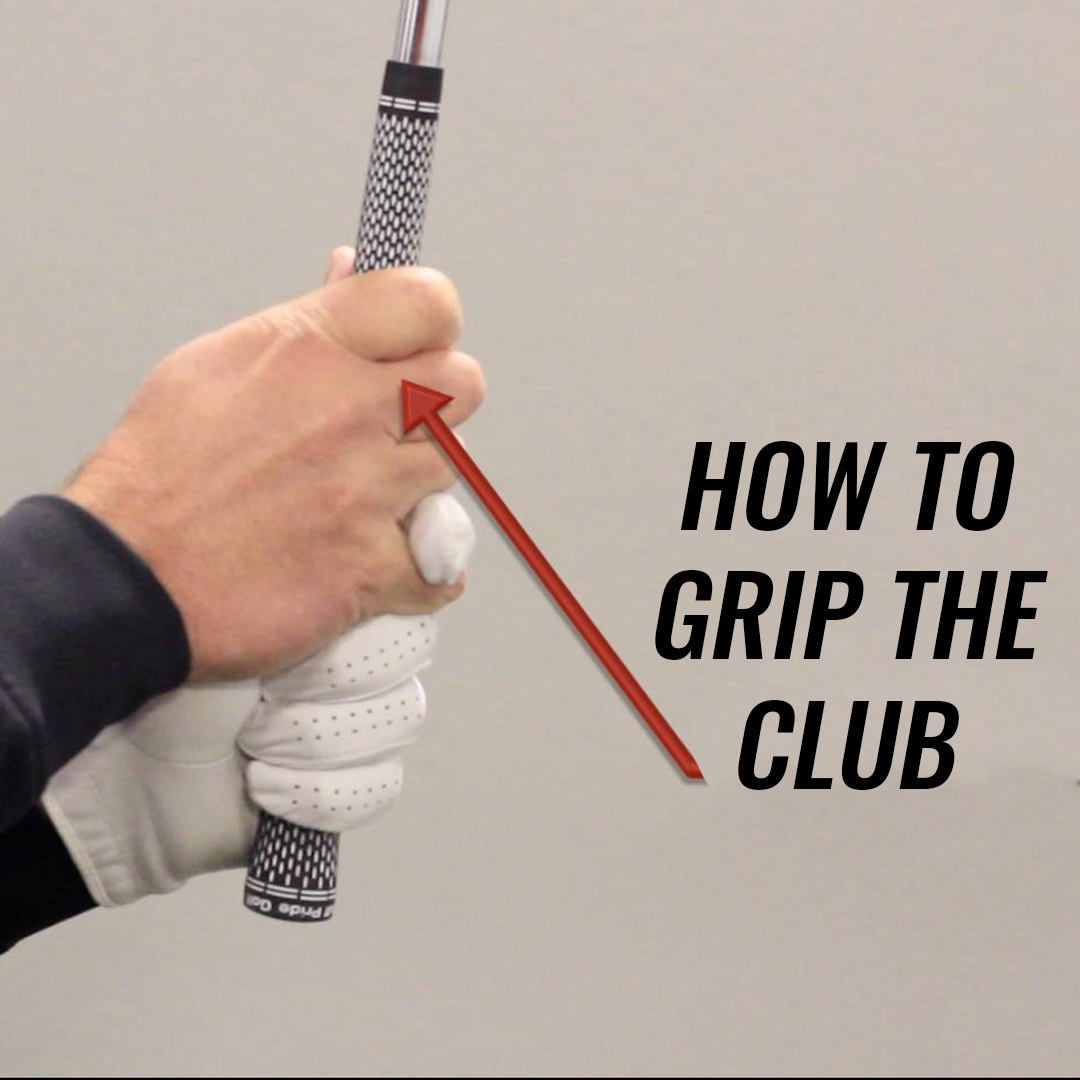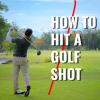How To Hold A Golf Club

How To Hold A Golf Club
Golf can be a complex game with a number of key elements that every golfer needs to master before they’ll be able to play a decent round.
When starting out, understanding how to hold a golf club correctly is one of the first and most important skills you’ll need to become proficient in. While it might initially seem like there isn’t much to it, knowing how to properly hold a golf club is a core foundational skill that’s essential to get down pat early in the piece.
Whether you’re keen to take up weekend golfing and want to master the basics, you’re concerned your grip might be to blame for those mediocre shots, or you just want to make sure you don’t completely embarrass yourself at that upcoming work golf day, we’ve got you covered.
In this guide, we’ll bring you up to speed on exactly how to grip a golf club correctly so you won’t look like a complete novice next time you hit the fairways.
|
Article Summary: ● Grip Types Explained: Choose from the interlocking (fingers intertwined for unity), overlap/vardon (pinky rests between index and middle fingers for balance), or baseball/ten finger (all fingers down the club for strength) grips. Each is suited for different hand sizes and preferences, right or left-handed. ● Grip Pressure & Adjustment: Maintain a firm yet gentle grip, similar to holding a bird without letting it fly away or squeezing too tight. Adjust your grip stronger or weaker by rotating your hands to affect shot trajectory and control. ● Practice Drills: Regularly practise gripping and re-gripping your club to build correct muscle memory. Use a mirror for visual feedback on hand placement and experiment with swinging at different grip pressures to find the ideal balance for control and flexibility. |
Why Is Correct Golf Grip Important?
Knowing how to correctly hold a golf club is a key foundational skill that is essential to mastering your golf game.
Having a correct golf grip is critically important for several reasons:
- Control and consistency: The grip is your only point of contact with the club. A proper grip allows you to have better control over the clubface throughout the swing, which leads to more consistent ball striking and direction.
- Clubface alignment: A correct grip helps in aligning the clubface square to your target at impact. Improper grip can lead to misalignment, resulting in slices, hooks or inconsistent shots.
- Power and distance: A good grip allows you to transfer more power from your body to the clubhead efficiently. With a weak or incorrect grip, you might lose power and distance on your shots.
- Wrist action: The grip influences the movement and position of your wrists during the swing. A proper grip helps in maintaining a stable wrist position, which is crucial for a solid strike.
- Prevents tension and injury: A correct grip promotes a relaxed and tension-free swing. An incorrect grip can lead to unnecessary tension in your hands, arms and shoulders, increasing the risk of injury over time.
- Foundation of the swing: The grip is the foundation of your golf swing. A good grip sets the stage for a proper swing plane, tempo and overall technique.
A poor golf grip is often the underlying reason why novice golfers struggle so much when first starting out. However, if you invest a little time to nail down the basics before you develop bad habits, it will make a world of difference to your game.
How To Grip A Golf Club
Before we get stuck into it, it’s helpful to first understand a couple of things.
When you initially start paying attention to how you hold a golf club, it’s likely it will feel a little awkward. This is completely normal. The grip is one of the most uncomfortable parts of learning to play golf and almost every new golfer needs a little time to get used to holding the golf club the correct way. But it is worthwhile sticking to the basic principles as much as possible. With some practice, assuming the correct golf grip each time you go to take a shot will become second nature.
Having said that, it’s also good to know there’s no single correct way to hold a golf club that will work for every player. While it is important to establish good habits from the get-go, if something just doesn’t feel right, listen to your body and make any adjustments you feel necessary—after all, a great strike is only possible when you’re feeling relaxed and comfortable.
It’s also helpful to note the instructions we’ve provided here can be applied for both right- and left-handed golfers. The key distinction is that if you’re right-handed, your left hand will be your top hand and your right hand will be your bottom hand. Conversely, if you’re left-handed, your right hand will be your top hand and your left hand will be your bottom hand.
If you like to wear a golf glove, this should be worn on your top (non-dominant) hand.
Holding the golf club
Now, let’s dive into the fundamentals of how to hold a golf club.
The first thing you need to do is ensure you’re holding the club straight. To do this, gently rest the club in your hand and look at the face of the club to check it’s straight (i.e. at a 90° right angle to your stance).
If the club face is even slightly angled to either the left or right, you can expect your ball to follow suit and shoot off in that same direction.
Pro Tip: A simple way to check if your club face is straight is to look at the markings on your grip. Most golf grips will display markings or writing down the centre of the grip shaft which align with the club face.
How to grip with your top hand
Once you’re confident that the golf club is straight, you’re ready to grip the club with your top (non-dominant) hand. To do this:
- Let your arm hang naturally next to the grip with your palm facing inwards toward the golf club.
- Place your palm on the side of the grip along where the top of your palm meets the base of your fingers, then wrap your fingers around the grip.
- Wrap the rest of your hand around on top of the club with your thumb running down the length of the grip.
Pro Tip: Make sure you don’t cover the end of the grip with your hand. Try to leave a gap of one or two centimetres between the top of your hand and the butt end of the club.
Check yourself: If you’ve gripped the club correctly, you should notice the space between your thumb and index finger creates a ‘V’ shaped crease. When the club is level to the ground, the point of the crease should point toward your dominant shoulder.
Check yourself: You should be able to see the two knuckles of the index and middle fingers. You may even want to make two small markings on these knuckles on your golf glove to use as a guide each time you set yourself up.
How to grip with your bottom hand
Now you’re ready to grip the club with your bottom hand.
- Like before, make sure your palm is facing inwards with your bottom (dominant) hand resting along the side of the grip.
- Place the bottom hand against the thumb of your top hand and wrap your fingers around the grip.
- Enclose the squishy bit of your palm at the base of your thumb over the thumb on your top hand.
Check yourself: Just like with your top hand, if you’ve gripped the club correctly with your bottom hand, you should notice the space between your thumb and index finger creates the same ‘V’ shaped crease which should also point toward your dominant shoulder.
Different Types of Golf Grips And Their Advantages
Once you know how to grip a golf club with both your top and bottom hands, it’s time to pay attention to your backhand grip.
Your backhand grip relates to the ways your fingers sit together along the back of the golf grip and there are a few different options you can go with:
- the baseball (or ten finger) grip
- the overlap (or vardon) grip, or
- the interlocking grip.
Every golfer will have their own grip preference. While overlapping or interlocking grips are generally more widely recommended by golf instructors for their stability, control and consistency, your choice of grip should ultimately come down to what feels most comfortable.
Let’s take a look at how the various grip styles differ…
Baseball Golf Grip
When using the baseball (or ten finger) grip, all 10 fingers are stacked neatly together, with the base of the top hand pressed firmly against the bottom hand.
The baseball grip is rarely used by professionals, however, beginners who are transitioning from other sports often find using a baseball grip to be most comfortable. The baseball grip is also often preferred because it can reduce tension in the hands and arms.
Overlap Golf Grip
The overlap (or vardon) grip is where your pinky finger from your top hand overlaps and rests between the index and middle fingers on your bottom hand.
The overlap grip promotes a unified and secure hold on the club, encouraging proper hand synchronisation throughout the swing, enhancing control over the clubface and promoting a more fluid release of the club through impact. The overlap grip is often the preferred grip for players with larger hands.
Interlocking Golf Grip
The interlocking grip is similar to the overlap grip, however the pinky and index finger of the two hands intertwine with each other to lock together more firmly and work in unity.
The interlocking grip creates a more secure connection between the hands and club, which can offer enhanced stability and control and a more powerful swing. The interlocking grip is often popular among players with smaller hands or weaker grips, as it provides a strong, unified hold that can help prevent the club from slipping during the swing.
Strong vs Weak Golf Grip And Their Advantages
Most golfers aim to achieve a neutral golf grip, which means they are holding the club with the hands positioned in a balanced and neutral position. A neutral grip can help promote a square clubface at impact, which generally leads to straighter and more consistent ball flights.
However, some golfers might need to slightly adjust their grip to either a stronger or weaker grip to achieve a desired shot shape, or to address problems such as continually slicing or hooking the ball.
Strong Golf Grip
A strong golf grip involves rotating both hands more to the right (for a right-handed golfer) on the grip compared to a neutral grip. This rotation causes the clubface to close (or point left) relative to the target line when the hands are placed on the club.
By closing the clubface, a strong golf grip can naturally minimise or eliminate slices, promoting a more neutral or right-to-left (draw) ball flight. While a strong grip can be beneficial for some golfers, it can lead to excessive hooking or difficulty in controlling the clubface for certain players.
Weak Golf Grip
A weak golf grip involves rotating the hands more to the left (for a right-handed golfer) on the grip compared to a neutral grip. This rotation causes the clubface to open (or point right) relative to the target line when the hands are placed on the club.
A weak golf grip can minimise or eliminate hooks by naturally opening the clubface at impact. This helps promote a straighter or more controlled ball flight without excessive draw spin. A weak grip can be suitable for golfers who prefer to play a fade or have a natural draw tendency, however, it’s important to consider how a weak grip will work with your individual swing mechanics.
Common Mistakes To Avoid
While discovering your ideal golf grip can take some trial and error, there are a couple of mistakes or pitfalls that plenty of novice golfers make when learning how to hold a golf club correctly that can impact their swing and overall game.
Here are a couple of things to look out for:
- Try to avoid gripping the club too tightly. This can lead to tension in the hands, arms and shoulders, resulting in a restricted and less fluid swing. Instead, aim for a firm, yet relaxed grip pressure.
- Ensure your hands are positioned correctly on the grip. Position your hands too high up toward the club head and it can disrupt your swing path, leading to decreased power and control. Position your hands too close to the butt end of the club and you’ll have difficulty maintaining a square clubface.
- If using an overlapping or interlocking grip, make sure your hands are connected properly, as this can affect your control and feel of the club during the swing.
- When first starting out, it’s best to adopt a neutral grip. Once you have a clear understanding of your swing mechanics and playing style, then you can experiment with different grip styles to find what works best for you.
How To Hold A Golf Putter
We’ve covered how to hold full swing golf clubs, but it’s also important to know how to hold a golf putter. While it’s best not to change your overall grip style too much, your putting grip may require some slight adjustments.
The most common putting grips include:
- The conventional or reverse overlap: This is the most common putting grip used by many golfers. Place your top hand at the top of the grip with the pinky finger overlapping the index finger of the bottom hand.
- The cross-handed: This grip involves placing the lead hand lower on the grip than the trail hand.
- The claw grip: In the claw grip, the trail hand is used to grip the putter with a unique technique where the fingers are extended and the palm faces the target. The lead hand typically adopts a traditional grip position.
Use a light grip pressure when holding the putter. The grip should feel secure but not tight or tense. This should promote better feel and control during the putting stroke.
You should also maintain a firm but relaxed wrist position to promote a smooth pendulum-like motion, and avoid excessive hand or wrist movement which can lead to inconsistency in your stroke.
How To Hold A Driver Golf Club
You should hold a driver in the same way you would hold any other type of club used for full swings. If you’re unsure, simply follow the ‘How To Grip A Golf Club’ steps outlined earlier in this article.
Left Hand Golf Grip
Are you a lefty? Don’t worry. You can still use the same tips and instructions by simply reversing them to suit your dominant left hand.
Here’s how it works:
- To ensure you’re holding your golf club correctly, follow the same steps provided, however, your right hand would be your top hand and your left hand would be your bottom hand.
- When considering grip strength, instead of rotating both hands to the right for a strong golf grip, you’d rotate them to the left to close the clubface. Similarly, to achieve a weak grip strength, left-handed golfers should rotate both hands to the right to open the clubface.
While the fundamentals of your golf grip shouldn’t change because you’re left-handed, it is essential that you use a set of left-handed golf clubs.
Other Considerations
Golf Club Grip Pressure
Golf grip pressure refers to the amount of force or tension exerted by your hands and fingers on the golf club when holding it during the swing. Grip pressure is a critical element of the golf swing as it directly affects your control, feel and consistency in striking the ball.
The ideal golf grip pressure is a balance between holding the club firmly enough to maintain control and stability, yet light enough to allow for a fluid and unrestricted swing. Essentially, you want to ensure you use a firm grip without strangling the gold club.
Sizes Of Golf Grips
Golf grips come in various sizes to accommodate different hand sizes and preferences. The size of a golf grip primarily refers to its diameter, which can vary from standard to jumbo size options.
Choosing the right grip size is important for achieving a comfortable and effective grip on the club. Standard sized golf grips are generally preferred by players with small to average sized hands, whereas players with larger hands may feel more comfortable using midsize or jumbo golf grips.
If you’re unsure which size golf grip is right for you, head into a Golf Clearance Outlet store to sample the different sizes. We stock an extensive range of discount golf grips from leading brands and can even fit them to your clubs for you.
Using A Golf Grip Training Aid
If you’re struggling with your grip technique, it could be helpful to try using a golf grip training aid.
Golf grip trainers attach neatly onto your golf grip and include ergonomic mouldings to encourage correct grip positioning and hand placement. They can be a great way to ensure you’re holding your golf club in the correct way, helping you to develop good muscle memory for an ideal grip technique.
Golf Clearance Outlet is your go-to if you’re looking for top tier golf gear at discount prices. Browse our range of golf clubs, bags, balls, shoes and accessories online or find a store near you for professional advice and fittings.











